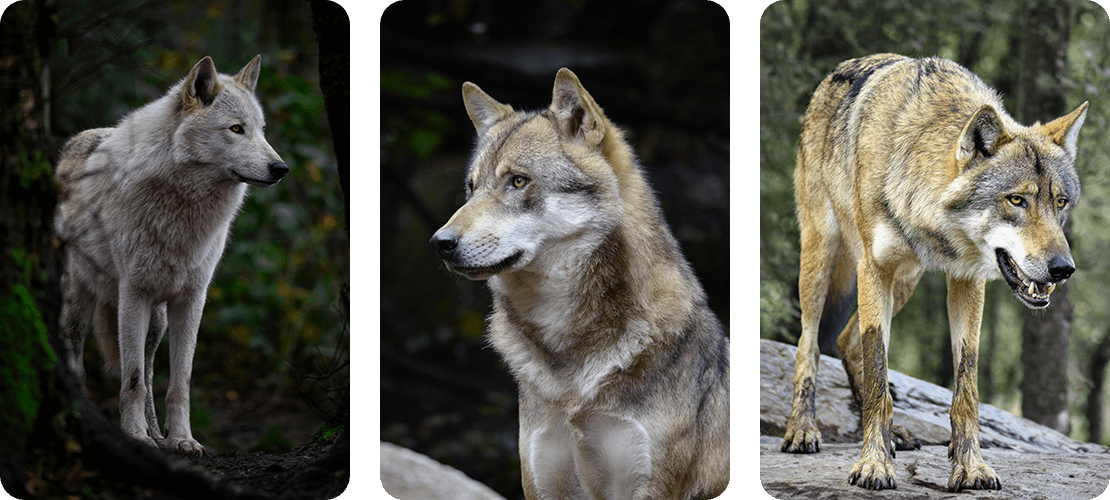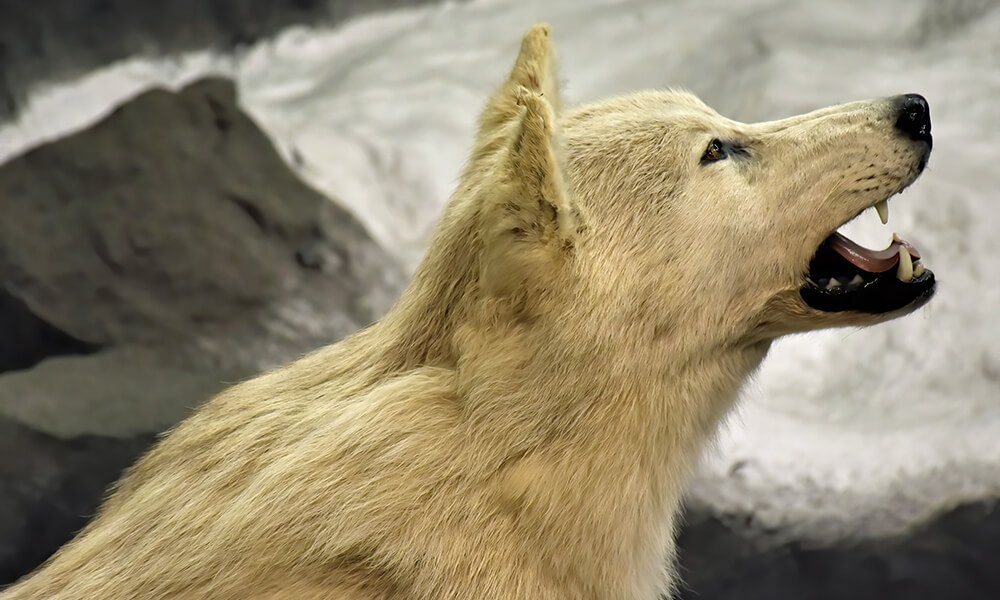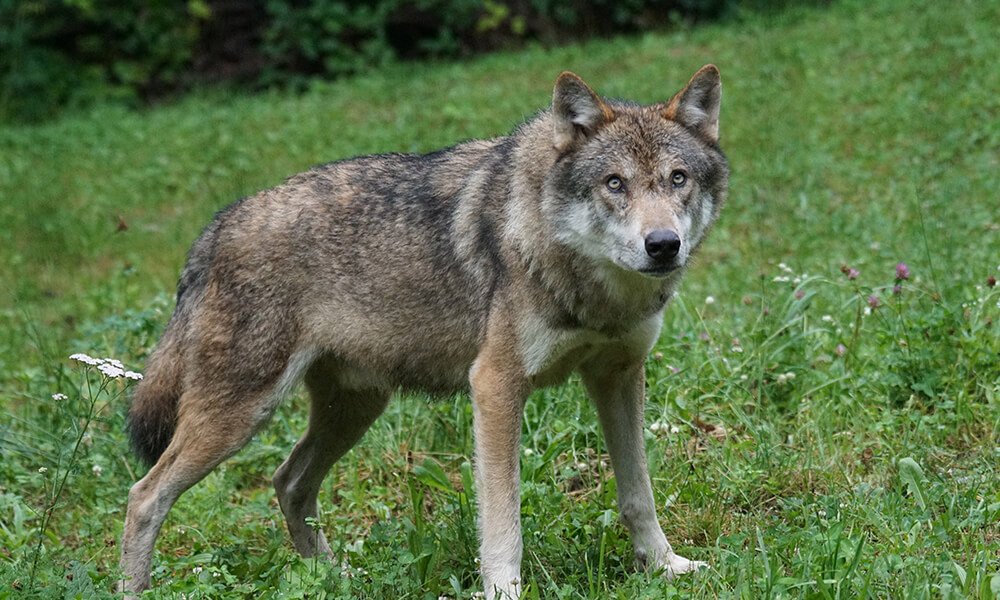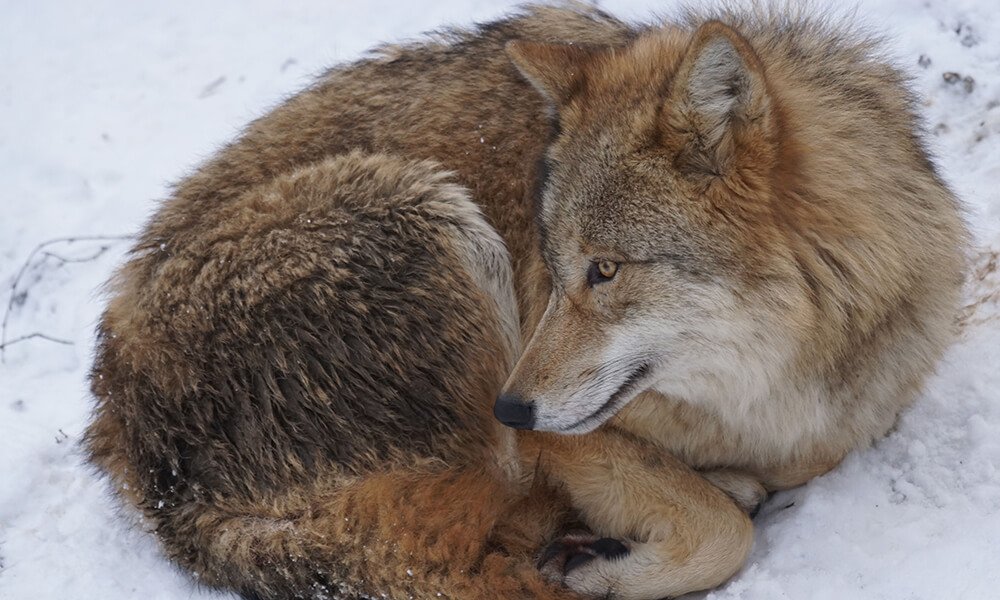Wolf Spirit Animal: Meaning, Significance, and Empowering Life Lessons

Introduction: Hearing the Call of the Wolf
Envision a moonlit forest, where a lone wolf lifts its head and howls into the tranquil night. Instantly, you sense the wild spirit that echoes through the ages—mysterious, resolute, and fiercely loyal. The Wolf Spirit Animal carries a profound energy that blends intuition, leadership, and community into a dynamic whole. For centuries, wolves have enthralled human imagination and spirituality, serving as guides, guardians, and symbols of both independence and unity.
If you feel a deep resonance with wolf imagery—seeing wolves in dreams, stumbling upon wolf references, or simply feeling inexplicably drawn to their essence—there’s a chance the wolf is calling to you as a spirit animal. Wolves teach us the art of keen observation, inner wisdom, and the balance between standing alone and thriving within a pack. In this extensive guide, we’ll explore how the Wolf Spirit Animal can illuminate your path, offer timeless lessons, and empower you to navigate life’s complexities with courage and grace.
Wolves in Nature: Remarkable Traits and Behaviors
Before diving into spiritual symbolism, it’s vital to understand wolves in their natural habitat. Wolves are canine predators known for their complex social structures and strong survival instincts. They primarily inhabit regions of North America, Europe, Asia, and parts of the Middle East, with species like the gray wolf, Arctic wolf, and the timber wolf showcasing a range of adaptations.
Pack Structure
Wolves typically live in packs of five to ten members, led by an alpha pair (often called the breeding pair). Each wolf in the pack has a rank and role, contributing to the collective’s survival—whether by hunting, rearing pups, or standing guard. This dynamic interplay highlights wolves’ innate cooperation and loyalty.
Communication
Wolves communicate through a repertoire of howls, barks, growls, and body language. A communal howl can unite a pack or define territory. Subtle cues—a lowered tail, a flattened ear, or playful bow—can signal aggression, submission, or camaraderie, reflecting a highly developed emotional and social intelligence.
Hunting and Resourcefulness
As apex predators, wolves rely on strategy and teamwork to hunt prey such as deer, elk, and caribou. Their cunning approach—coordinating attacks, corralling targets, and adapting to changing conditions—embodies resourcefulness. Despite their fearsome hunting prowess, wolves also maintain the ecological balance by regulating prey populations.
Strong Bonds
Wolves form deep familial bonds, often mating for life. Pack members groom, play, and raise pups together, highlighting their emphasis on love, support, and shared responsibility. This sense of solidarity is an essential aspect of wolf energy, offering lessons in both autonomy and collaboration.
Core Symbolism of the Wolf Spirit Animal
Wolves are revered for their complex social structure, heightened senses, and majestic presence. As a spirit animal, the wolf calls on us to develop our intuition, cultivate loyalty, and strike a balance between independence and community life.
Loyalty and Pack Dynamics
Wolves are famed for their unshakable devotion to the pack. They look out for each other, share resources, and defend territory. In the human realm, wolf energy encourages you to support those you love, remain steadfast in relationships, and value the power of collective unity.
Key Insight: “Stand by those who matter to you. Through loyalty and mutual respect, you strengthen the bonds that bring both security and purpose.”
Intuition and Instinct
A wolf’s acute senses—keen sight, powerful scent, and acute hearing—mirror their sharp instincts. Wolves rely on intuition to navigate dense forests and unpredictable prey. Similarly, the Wolf Spirit Animal urges you to trust your gut feelings, hone your inner wisdom, and sense the undercurrents around you.
Key Insight: “Your intuition is a guiding compass. Like the wolf, tap into your senses to gauge hidden truths and subtle energies in your environment.”
Leadership and Courage
Alpha wolves embody a confident, balanced leadership approach—leading by example, ensuring the well-being of all pack members. For those who align with wolf energy, leadership often emerges naturally, characterized by bravery, decisiveness, and consideration.
Key Insight: “To lead is to protect and empower. Embrace the wolf’s fearless spirit as you guide yourself and others to shared victories.”
Balance of Independence and Community
Wolves reflect the delicate balance of relying on the pack and maintaining personal agency. While they function best in groups, lone wolves occasionally branch off to form new packs or explore territory. The wolf spirit teaches us to harmonize cooperation and individuality—seeking support while preserving our authentic identity.
Key Insight: “Interdependence doesn’t mean dependence. Cultivate a healthy blend of cooperation and individuality.”
Cultural and Historical Perspectives
Wolves figure prominently in folklore, mythology, and cultural belief systems around the globe. Their prominence in both revered and fearful narratives underscores the wolf’s complex role in human imagination.
Ancient Myths and Legends
- Norse Mythology: The giant wolf Fenrir—a child of the trickster god Loki—was foretold to play a pivotal role in Ragnarök. While Fenrir was feared for his eventual destruction, wolves in Norse traditions also symbolized ferocity and cosmic power.
- Roman Myth: According to legend, the founders of Rome, Romulus and Remus, were nurtured by a she-wolf named Lupa. This story encapsulates the wolf’s protective, maternal aspect and its role in shaping civilization.
Native American Traditions
Many Indigenous tribes across North America hold the wolf in high spiritual esteem. They often view wolves as:
- Teachers guiding tribes to live in harmony with nature.
- Guardians endowed with sharp instincts and mystical insight.
- Family Emblems symbolizing loyalty and cooperation within tribal units.
For certain tribes, adopting wolf rituals or wearing wolf motifs signifies a deep connection with the Earth’s cycles, communal living, and spiritual guardianship.
Modern Symbolism and Popular Culture
- Literature and Media: Wolves appear in countless stories—from fairy tales like Little Red Riding Hood to modern fantasies like Game of Thrones. They often embody themes of wildness, moral ambiguity, or fierce loyalty.
- Environmental Conservation: As keystone predators, wolves are championed by environmentalists who highlight their role in maintaining ecosystem stability. Their revival in areas like Yellowstone National Park underscores nature’s resilience and our duty to protect wildlife.
- Team Mascots: Numerous sports teams and organizations adopt wolf imagery, reflecting attributes of strength, courage, and spirit.

Dream Interpretations: When Wolves Appear at Night
Dreams involving wolves can carry powerful messages from your subconscious. Their meaning may vary depending on the context, emotions, and actions within the dream:
Friendly Wolf or Pack
- Suggests a nurturing community, supportive relationships, or a reminder that you are protected. You may be entering a period of close collaboration or camaraderie.
Lone Wolf
- Could represent personal independence or an isolated phase. Consider whether you crave solitude for spiritual development or fear loneliness.
Aggressive or Menacing Wolf
- May point to repressed anger, unacknowledged fears, or unresolved conflicts. This dream signals the need to confront what you’ve avoided and reclaim your inner power.
Transforming into a Wolf
- Signifies a personal awakening. You might be embracing your instincts, stepping into leadership, or discovering hidden strengths.
Wolf Howling at the Moon
- Symbolizes communication with the unconscious and the desire to make your voice heard. This dream can also hint at spiritual callings or deeper life purpose.
Dream Tip: Record your dream details—imagery, feelings, environment—right after you wake up. Over time, patterns can emerge, revealing how wolf energy is guiding or challenging you in your waking life.
Wolf as a Power Animal
A Power Animal is a spirit guide you can invoke for support during specific life events or challenges. Calling on Wolf Energy can help you harness attributes of intuition, loyalty, and bravery when you need them most.
- Facing Conflict: Wolves handle pack hierarchy and external threats strategically. If you’re tackling a tough situation—at work or at home—draw on the wolf’s ability to navigate conflict with courage and clarity.
- Protecting Loved Ones: The wolf’s protective instincts shine when safeguarding family and territory. Use wolf energy to strengthen boundaries, defend your values, and stand up for those who rely on you.
- Deepening Intuition: Wolves rely on finely tuned senses. If you sense a need for heightened awareness—perhaps you’re suspecting hidden motives or feeling uncertain about a major decision—channel wolf energy to hone your gut instincts.
Connection Practice: Envision a confident wolf appearing beside you. Observe its posture and listen for any messages or impressions. Ask the wolf for strength, protection, or wisdom in navigating your current challenge.
Wolf as a Totem Animal
A Totem Animal represents a lifelong spiritual companion, mirroring deep-seated aspects of your personality. When the wolf is your totem, you might naturally embody its intuitive wisdom, inner strength, and powerful sense of loyalty.
- Innate Leadership: Wolf totem individuals often find themselves taking the lead in social or professional circles. This leadership can be soft-spoken yet deeply respected, guided by moral convictions.
- Protection of Loved Ones: You’re likely quick to defend friends, family, or colleagues against harm. A strong sense of justice and duty can drive your actions.
- Close-Knit Relationships: Wolves flourish in stable packs. Likewise, you may maintain a tightly knit group of confidants, prioritizing trust, cooperation, and open communication.
- Love for Solitude: Despite cherishing community, you also value time alone for introspection, recharging, and spiritual exploration.
Life Path: If the wolf is your totem, you’ll repeatedly encounter situations that test your loyalty, challenge your leadership skills, and stretch your intuitive capacity. Embrace these trials as opportunities to refine your wolf-like traits.
Wolf Spirit Animal and Angel Numbers
Angel numbers—repetitive number sequences like 111, 222, 333, or 444—can appear in tandem with spirit animal encounters, amplifying certain messages:
- 111 (New Beginnings, Manifestation): If you see 111 while connecting with wolf symbolism, it may signal a fresh start in relationships or career, urging you to trust wolf intuition and embrace newly forming packs or alliances.
- 222 (Balance, Cooperation): Wolves exemplify community balance. 222 may nudge you to nurture harmonious teamwork, unify conflicting parties, or strengthen your support network.
- 333 (Growth, Creativity): The wolf’s inventive approach to hunting parallels 333’s creative expansion. Explore fresh strategies—whether in personal projects, spiritual practices, or collaborative goals.
- 444 (Protection, Stability): Seeing 444 while evoking wolf energy suggests divine guardianship. The Universe (like a wolf pack) stands behind you, fostering the inner stability you need to grow.
Practical Tip: Whenever you notice these number sequences, pause. Reflect on your emotional state and environment. Ask if the wolf’s lessons—intuition, loyalty, or leadership—could offer clarity or reassurance in that exact moment.

Crystals and Gemstones for Wolf Energy
Incorporating crystals and gemstones can strengthen your connection to the Wolf Spirit Animal, enhancing traits such as intuition, courage, and inner stability.
Moonstone
- Why It Aligns: Associated with intuition, feminine energy, and the moon (often linked with wolf howls). Moonstone promotes calm reflection and trust in your inner voice.
- How to Use: Wear moonstone as jewelry or place it under your pillow to foster dream insights and emotional balance.
Labradorite
- Why It Aligns: Labradorite is known for spiritual awakening and psychic abilities. Like a wolf’s heightened senses, it sharpens your intuition and wards off negative energy.
- How to Use: Meditate with labradorite or carry a small piece in your pocket to remain open yet protected throughout the day.
Smoky Quartz
- Why It Aligns: Smoky quartz offers grounding and dispels fear. Wolves are both grounded and fearless in their pursuits. This crystal can help you stay centered in challenging times.
- How to Use: Keep smoky quartz on your desk or in a home altar to stabilize emotions and strengthen resolve.
Obsidian
- Why It Aligns: This volcanic glass is renowned for psychic protection and unearthing hidden truths. Wolves detect hidden dangers instinctively, and obsidian fosters a similar protective clarity.
- How to Use: Use obsidian during introspective rituals or shadow-work to confront fears, illusions, or old wounds, reminiscent of a wolf’s unwavering gaze into the dark forest.
Practical Applications of Wolf Wisdom
The Wolf Spirit Animal offers a wealth of practical insights that can enrich multiple facets of your life—from personal growth to career development. Let’s explore four main areas where wolf energy can be transformative.
Personal Development and Emotional Well-Being
- Trust Your Instincts: Whenever faced with a dilemma—be it personal or emotional—tap into your wolf-like intuition. Reflect on subtle cues and gut feelings rather than over-relying on external validation.
- Practice Mindful Observation: Wolves constantly monitor their surroundings, reading subtle signals. Cultivate mindfulness by pausing to take stock of your emotions, environment, and bodily sensations throughout the day.
- Assert Healthy Boundaries: Just as wolves defend their territory, guard your own mental and emotional spaces. This might mean learning to say “no” or distancing yourself from draining influences.
Relationships, Friendships, and Community
- Build Trust and Dependability: Like a tight-knit wolf pack, genuine relationships flourish on mutual respect and shared responsibilities. Honor commitments, be there for friends, and celebrate communal achievements.
- Foster Open Communication: Wolves convey intricate messages through howls and body language. Likewise, you can enhance relationships by communicating feelings clearly, listening intently, and acknowledging nonverbal cues.
- Encourage Collective Strength: In group projects or family settings, harness wolf energy to unite members around a common goal. Highlight individual strengths and rally everyone’s contribution for a mutual win.
Career and Leadership Roles
- Lead with Confidence: Wolf alphas govern with a balance of assertiveness and empathy. If you’re in a leadership role, demonstrate fairness, decisiveness, and genuine concern for your team’s well-being.
- Adaptive Strategy: Wolves shift hunting tactics based on prey and terrain. Mirror this agility in business or creative pursuits—stay open to refining strategies, exploring new options, and welcoming feedback.
- Instill Team Cohesion: A wolf pack hunts effectively because each member trusts and understands their role. Encourage your colleagues or partners to feel valued, empowered, and united by a shared vision.
Mindfulness and Spiritual Practice
- Nature Connection: Spend time outdoors—whether it’s walking in the woods or simply sitting in your yard. Observing natural cycles fosters a deeper kinship with wolf energy.
- Reflective Journaling: Write about your “pack” (family, friends, or spiritual community), analyzing each member’s role and your place within the group. Explore what loyalty and support mean to you.
- Meditative Howling: This might sound unconventional, but quietly vocalizing (or mentally “howling”) can help release tension and tap into a primitive, grounding energy. It’s a symbolic way to unify your subconscious emotions with the outer world.
Rituals and Exercises to Connect with Wolf Energy
Implementing targeted rituals and exercises can deepen your relationship with the Wolf Spirit Animal, invoking its strengths in times of growth or uncertainty.
Wolf Visualization or Meditation
- Quiet Space: Find a calm setting, dim the lights, or light a candle/incense if desired. Sit or lie down comfortably.
- Grounding Breath: Inhale for four counts, hold briefly, then exhale for four counts. With each breath, feel your body relax and your mind open.
- Forest Setting: Visualize a moonlit forest clearing. Hear the soft rustle of leaves and sense the crisp nighttime air.
- Summon the Wolf: Envision a wolf approaching calmly—notice its coat color, eye shape, and energy. Allow it to circle you, feeling no fear—just curiosity and respect.
- Receive a Message: Ask the wolf silently if it has guidance for you. Pay attention to any impressions, words, or images that arise.
- Integration: Thank the wolf. Visualize it retreating into the forest, your connection remaining strong. Slowly return to a waking state, gently blinking your eyes open.
Pro Tip: Journal your experience immediately. Over time, repeated meditations can yield deeper insights about your wolf connection.
Affirmations for Strength and Confidence
Affirmations can solidify the traits you want to embody from wolf energy. Speak them aloud daily—preferably in front of a mirror—to reinforce your intentions.
- “I trust my inner wisdom and sharpen my instincts.”
- “I lead with courage and honor, guided by wolf strength.”
- “My pack and I stand united, supporting each other’s growth.”
- “I balance independence with healthy connection.”
Lifestyle Adjustments
- Embrace Nature: Schedule regular visits to wild spaces—forests, mountains, rivers—connecting with the quiet power of untamed environments.
- Ethical Consumption: Wolves follow natural cycles of hunting for necessity. In your own life, practice conscious consumption—buy sustainably, reduce waste, and respect resources.
- Community Service: Join local volunteering efforts or social groups. Wolves thrive in packs; similarly, channel your energy into collaborative activities that uplift your community.

Shadow Side of Wolf Energy
Though wolves carry a wealth of positive symbolism, their energy can present a shadow side if misapplied or unbalanced. Acknowledging these potential pitfalls helps ensure you channel wolf traits constructively.
Over-Aggression
- Wolves can become fiercely territorial. When taken too far, protective instincts morph into unjust aggression or dominance in personal relationships.
Isolation
- The lone wolf archetype can represent self-reliance, but it can also lead to alienation, emotional withdrawal, or mistrust of communal bonds.
Excessive Control
- Alpha wolves guide the pack for collective benefit, yet a distorted version of leadership might become controlling or tyrannical.
Defensiveness and Paranoia
- Trusting your instincts is good, but perpetual hyper-vigilance can degrade into anxiety, making you see threats where none exist.
Balancing Tip: Reflect regularly on how you’re expressing wolf energy—are you open to partnership or pushing people away? Are you protective or domineering? Mindful self-awareness helps keep wolf power in harmony.
Famous “Wolf” Figures and Archetypes
From mythological beasts to real-world advocates, several figures resonate with wolf-like qualities of bravery, leadership, and communal ties.
- Chief Sitting Bull (Hunkpapa Lakota): Though not specifically called a “wolf,” his leadership style and unwavering devotion to his people mirror the wolf pack’s loyalty and protective instinct.
- Winona LaDuke (Environmental Activist): Her advocacy for preserving indigenous lands and wildlife, including wolves, displays the steadfast guardianship central to wolf energy.
- Jack London’s White Fang & The Call of the Wild: Literary classics exploring the wolf-dog archetype, illustrating themes of survival, identity, and the pull between wilderness and civilization.
- Jon Snow from Game of Thrones: Accompanied by his direwolf, Ghost, Jon Snow exemplifies attributes like loyalty, leadership, and moral fortitude, reminiscent of a protective wolf bond.
These examples underline the wolf’s enduring resonance across cultures—synonymous with fierce devotion, primal intuition, and the quest for harmonious community.
Conclusion: Heeding the Wolf’s Wise Howl
The Wolf Spirit Animal has prowled through human consciousness for millennia, embodying a captivating synergy of independence and unity, instinct and intellect, fearlessness and empathy. Whether you encounter the wolf as a fleeting guide or sense it as a lifelong totem, embracing this majestic creature’s lessons can transform your personal and spiritual life.
Wolf Wisdom Encourages Us To:
- Remain Loyal: Stand by loved ones, forging meaningful connections built on trust and mutual growth.
- Honor Instinct: Listen to your inner voice, decoding subtle clues that often slip past rational thinking.
- Lead with Integrity: Safeguard those under your care, knowing true leadership is about service, not oppression.
- Balance Solitude and Society: Seek solitude for introspection but return to your “pack” for support and shared accomplishments.
By learning from the wolf’s unwavering spirit, you can rise to challenges with resilience, guide others with compassion, and walk your path with a clear and discerning mind. May the wolf’s howling echo in your soul, reminding you of the bond between nature’s wild heart and your own inner power.
Frequently Asked Questions (FAQ)
Small but meaningful steps include:
- Reflecting on wolf traits (loyalty, intuition) each morning.
- Wearing or carrying crystals like moonstone or labradorite.
- Practicing mindful “check-ins” to sharpen your instincts throughout the day.
- Scheduling nature walks to reconnect with the earth.

